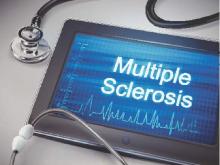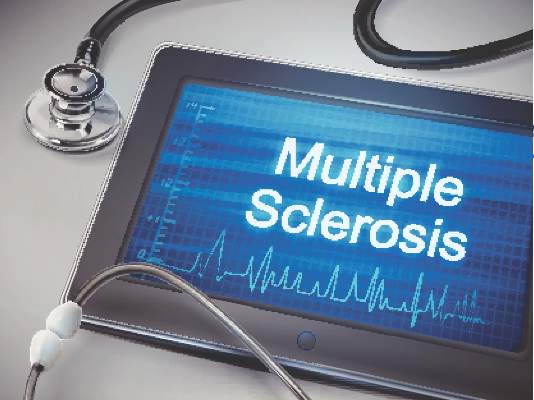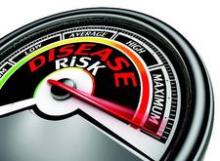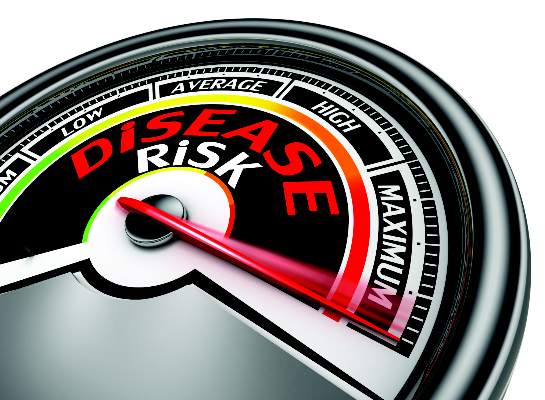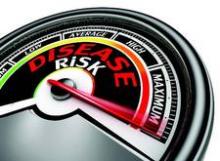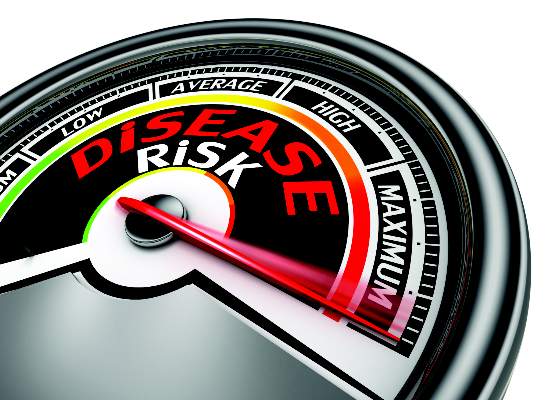User login
Film intervention may lessen stigma of schizophrenia
Viewing a documentary on people diagnosed with schizophrenia can prevent and reduce stigmatization of people with this mental illness, suggests a study.
The study’s 49 participants were divided into two groups; one of the groups viewed a documentary film on people with schizophrenia and the other group received no intervention. At the beginning of the study, all participants were queried through questionnaires about stereotypes they held about people with schizophrenia, the amount of social distance they wanted to have from people with schizophrenia, and their emotional reactions and behavioral tendencies toward people with the mental illness. Participants in the documentary group watched the documentary within 1 week of answering such questions. About 1 week after the initial assessment, participants from both groups answered the questions included in the questionnaires again.
The responses to questions of study participants in both groups at the beginning of the research project did not significantly differ from one another. Fewer stereotypes of patients with schizophrenia related to dangerousness and unpredictability were reported as being held by the documentary group in the second round of questioning, compared with this group’s responses to the first round of questioning. An additional finding of the study was that “the willingness for social distance” from people with schizophrenia “significantly declined” in the documentary group members, after they viewed the film; in contrast, such a decline did not occur in the members of the control group.
“These findings are promising as they suggest that a documentary film promoting indirect contact with people diagnosed with schizophrenia does not only have an effect on increasing knowledge about that illness but also on improving certain attitudes towards people diagnosed with schizophrenia,” said Bénédicte Thonon of the University of Liège (Belgium) and his colleagues.*
Future initiatives aimed at educating the public on people with schizophrenia “should aim at changing the incompetence stereotype in order to modify emotional and behavioral reactions. They also should offer more than one indirect contact with a stigmatized person or group of stigmatized people,” according to the researchers.
Read the study in Journal of Behavior Therapy in Experimental Psychology (doi: 10.1016/j.jbtep.2015.08.001).
*Correction, 1/20/2016: An earlier version of this story misstated a quote by the study's researchers.
Viewing a documentary on people diagnosed with schizophrenia can prevent and reduce stigmatization of people with this mental illness, suggests a study.
The study’s 49 participants were divided into two groups; one of the groups viewed a documentary film on people with schizophrenia and the other group received no intervention. At the beginning of the study, all participants were queried through questionnaires about stereotypes they held about people with schizophrenia, the amount of social distance they wanted to have from people with schizophrenia, and their emotional reactions and behavioral tendencies toward people with the mental illness. Participants in the documentary group watched the documentary within 1 week of answering such questions. About 1 week after the initial assessment, participants from both groups answered the questions included in the questionnaires again.
The responses to questions of study participants in both groups at the beginning of the research project did not significantly differ from one another. Fewer stereotypes of patients with schizophrenia related to dangerousness and unpredictability were reported as being held by the documentary group in the second round of questioning, compared with this group’s responses to the first round of questioning. An additional finding of the study was that “the willingness for social distance” from people with schizophrenia “significantly declined” in the documentary group members, after they viewed the film; in contrast, such a decline did not occur in the members of the control group.
“These findings are promising as they suggest that a documentary film promoting indirect contact with people diagnosed with schizophrenia does not only have an effect on increasing knowledge about that illness but also on improving certain attitudes towards people diagnosed with schizophrenia,” said Bénédicte Thonon of the University of Liège (Belgium) and his colleagues.*
Future initiatives aimed at educating the public on people with schizophrenia “should aim at changing the incompetence stereotype in order to modify emotional and behavioral reactions. They also should offer more than one indirect contact with a stigmatized person or group of stigmatized people,” according to the researchers.
Read the study in Journal of Behavior Therapy in Experimental Psychology (doi: 10.1016/j.jbtep.2015.08.001).
*Correction, 1/20/2016: An earlier version of this story misstated a quote by the study's researchers.
Viewing a documentary on people diagnosed with schizophrenia can prevent and reduce stigmatization of people with this mental illness, suggests a study.
The study’s 49 participants were divided into two groups; one of the groups viewed a documentary film on people with schizophrenia and the other group received no intervention. At the beginning of the study, all participants were queried through questionnaires about stereotypes they held about people with schizophrenia, the amount of social distance they wanted to have from people with schizophrenia, and their emotional reactions and behavioral tendencies toward people with the mental illness. Participants in the documentary group watched the documentary within 1 week of answering such questions. About 1 week after the initial assessment, participants from both groups answered the questions included in the questionnaires again.
The responses to questions of study participants in both groups at the beginning of the research project did not significantly differ from one another. Fewer stereotypes of patients with schizophrenia related to dangerousness and unpredictability were reported as being held by the documentary group in the second round of questioning, compared with this group’s responses to the first round of questioning. An additional finding of the study was that “the willingness for social distance” from people with schizophrenia “significantly declined” in the documentary group members, after they viewed the film; in contrast, such a decline did not occur in the members of the control group.
“These findings are promising as they suggest that a documentary film promoting indirect contact with people diagnosed with schizophrenia does not only have an effect on increasing knowledge about that illness but also on improving certain attitudes towards people diagnosed with schizophrenia,” said Bénédicte Thonon of the University of Liège (Belgium) and his colleagues.*
Future initiatives aimed at educating the public on people with schizophrenia “should aim at changing the incompetence stereotype in order to modify emotional and behavioral reactions. They also should offer more than one indirect contact with a stigmatized person or group of stigmatized people,” according to the researchers.
Read the study in Journal of Behavior Therapy in Experimental Psychology (doi: 10.1016/j.jbtep.2015.08.001).
*Correction, 1/20/2016: An earlier version of this story misstated a quote by the study's researchers.
FROM JOURNAL OF BEHAVIOR THERAPY AND EXPERIMENTAL PSYCHIATRY
Many Providers Don’t Teach Epinephrine Use for Food Allergies
Many pediatricians and allergists failed to provide instructions for when and how to use epinephrine and a written emergency action plan to the parents of children with food allergies, a study found.
Researchers asked the parents of 859 children with allergies to share their level of satisfaction with the care and delivery of care from the pediatricians and allergists treating their children over the course of the previous 6 months. While more than 75% of the doctors treated the parents courteously and respectfully and provided clear explanations of children’s allergies, a high percentage of the doctors neglected to provide other information essential for caring for children with food allergies, the parents reported.
The parents most often said they were missing explanations on when and how their children should be receiving epinephrine to treat allergic reactions and instructions on exactly what to do if their children had a medical emergency related to their specific allergies and circumstances. More pediatricians than allergists failed to share such information.
Among allergists, 68% explained when to use epinephrine, while 37% of pediatricians provided such information, the parents reported. Instructions on how to use epinephrine were provided to parents by 47% of allergists and 20% of pediatricians. Written emergency health care plans customized to each child were provided by 56% of the allergists and 24% of the pediatricians
“Although pediatricians might be relying on allergists to deliver [an emergency action plan and training in epinephrine autoinjectors use], with the rise in food allergies, guidelines recommend that pediatricians conduct these steps and not rely solely on the allergist,” said Jesse A. Blumenstock of Northwestern University, Chicago, and colleagues. “With our understanding of food allergy and anaphylaxis constantly evolving, guidelines and recommendations for how and when to give epinephrine and the need for an action plan need to be reinforced by physicians.”
Read the study in the Journal of Allergy and Clinical Immunology: In Practice (doi: 10.1016/j.jaip.2015.10.011).
Many pediatricians and allergists failed to provide instructions for when and how to use epinephrine and a written emergency action plan to the parents of children with food allergies, a study found.
Researchers asked the parents of 859 children with allergies to share their level of satisfaction with the care and delivery of care from the pediatricians and allergists treating their children over the course of the previous 6 months. While more than 75% of the doctors treated the parents courteously and respectfully and provided clear explanations of children’s allergies, a high percentage of the doctors neglected to provide other information essential for caring for children with food allergies, the parents reported.
The parents most often said they were missing explanations on when and how their children should be receiving epinephrine to treat allergic reactions and instructions on exactly what to do if their children had a medical emergency related to their specific allergies and circumstances. More pediatricians than allergists failed to share such information.
Among allergists, 68% explained when to use epinephrine, while 37% of pediatricians provided such information, the parents reported. Instructions on how to use epinephrine were provided to parents by 47% of allergists and 20% of pediatricians. Written emergency health care plans customized to each child were provided by 56% of the allergists and 24% of the pediatricians
“Although pediatricians might be relying on allergists to deliver [an emergency action plan and training in epinephrine autoinjectors use], with the rise in food allergies, guidelines recommend that pediatricians conduct these steps and not rely solely on the allergist,” said Jesse A. Blumenstock of Northwestern University, Chicago, and colleagues. “With our understanding of food allergy and anaphylaxis constantly evolving, guidelines and recommendations for how and when to give epinephrine and the need for an action plan need to be reinforced by physicians.”
Read the study in the Journal of Allergy and Clinical Immunology: In Practice (doi: 10.1016/j.jaip.2015.10.011).
Many pediatricians and allergists failed to provide instructions for when and how to use epinephrine and a written emergency action plan to the parents of children with food allergies, a study found.
Researchers asked the parents of 859 children with allergies to share their level of satisfaction with the care and delivery of care from the pediatricians and allergists treating their children over the course of the previous 6 months. While more than 75% of the doctors treated the parents courteously and respectfully and provided clear explanations of children’s allergies, a high percentage of the doctors neglected to provide other information essential for caring for children with food allergies, the parents reported.
The parents most often said they were missing explanations on when and how their children should be receiving epinephrine to treat allergic reactions and instructions on exactly what to do if their children had a medical emergency related to their specific allergies and circumstances. More pediatricians than allergists failed to share such information.
Among allergists, 68% explained when to use epinephrine, while 37% of pediatricians provided such information, the parents reported. Instructions on how to use epinephrine were provided to parents by 47% of allergists and 20% of pediatricians. Written emergency health care plans customized to each child were provided by 56% of the allergists and 24% of the pediatricians
“Although pediatricians might be relying on allergists to deliver [an emergency action plan and training in epinephrine autoinjectors use], with the rise in food allergies, guidelines recommend that pediatricians conduct these steps and not rely solely on the allergist,” said Jesse A. Blumenstock of Northwestern University, Chicago, and colleagues. “With our understanding of food allergy and anaphylaxis constantly evolving, guidelines and recommendations for how and when to give epinephrine and the need for an action plan need to be reinforced by physicians.”
Read the study in the Journal of Allergy and Clinical Immunology: In Practice (doi: 10.1016/j.jaip.2015.10.011).
Many physicians don’t teach epinephrine use for food allergies
Many pediatricians and allergists failed to provide instructions for when and how to use epinephrine and a written emergency action plan to the parents of children with food allergies, a study found.
Researchers asked the parents of 859 children with allergies to share their level of satisfaction with the care and delivery of care from the pediatricians and allergists treating their children over the course of the previous 6 months. While more than 75% of the doctors treated the parents courteously and respectfully and provided clear explanations of children’s allergies, a high percentage of the doctors neglected to provide other information essential for caring for children with food allergies, the parents reported.
The parents most often said they were missing explanations on when and how their children should be receiving epinephrine to treat allergic reactions and instructions on exactly what to do if their children had a medical emergency related to their specific allergies and circumstances. More pediatricians than allergists failed to share such information.
Among allergists, 68% explained when to use epinephrine, while 37% of pediatricians provided such information, the parents reported. Instructions on how to use epinephrine were provided to parents by 47% of allergists and 20% of pediatricians. Written emergency health care plans customized to each child were provided by 56% of the allergists and 24% of the pediatricians
“Although pediatricians might be relying on allergists to deliver [an emergency action plan and training in epinephrine autoinjectors use], with the rise in food allergies, guidelines recommend that pediatricians conduct these steps and not rely solely on the allergist,” said Jesse A. Blumenstock of Northwestern University, Chicago, and colleagues. “With our understanding of food allergy and anaphylaxis constantly evolving, guidelines and recommendations for how and when to give epinephrine and the need for an action plan need to be reinforced by physicians.”
Read the study in the Journal of Allergy and Clinical Immunology: In Practice (doi: 10.1016/j.jaip.2015.10.011).
Many pediatricians and allergists failed to provide instructions for when and how to use epinephrine and a written emergency action plan to the parents of children with food allergies, a study found.
Researchers asked the parents of 859 children with allergies to share their level of satisfaction with the care and delivery of care from the pediatricians and allergists treating their children over the course of the previous 6 months. While more than 75% of the doctors treated the parents courteously and respectfully and provided clear explanations of children’s allergies, a high percentage of the doctors neglected to provide other information essential for caring for children with food allergies, the parents reported.
The parents most often said they were missing explanations on when and how their children should be receiving epinephrine to treat allergic reactions and instructions on exactly what to do if their children had a medical emergency related to their specific allergies and circumstances. More pediatricians than allergists failed to share such information.
Among allergists, 68% explained when to use epinephrine, while 37% of pediatricians provided such information, the parents reported. Instructions on how to use epinephrine were provided to parents by 47% of allergists and 20% of pediatricians. Written emergency health care plans customized to each child were provided by 56% of the allergists and 24% of the pediatricians
“Although pediatricians might be relying on allergists to deliver [an emergency action plan and training in epinephrine autoinjectors use], with the rise in food allergies, guidelines recommend that pediatricians conduct these steps and not rely solely on the allergist,” said Jesse A. Blumenstock of Northwestern University, Chicago, and colleagues. “With our understanding of food allergy and anaphylaxis constantly evolving, guidelines and recommendations for how and when to give epinephrine and the need for an action plan need to be reinforced by physicians.”
Read the study in the Journal of Allergy and Clinical Immunology: In Practice (doi: 10.1016/j.jaip.2015.10.011).
Many pediatricians and allergists failed to provide instructions for when and how to use epinephrine and a written emergency action plan to the parents of children with food allergies, a study found.
Researchers asked the parents of 859 children with allergies to share their level of satisfaction with the care and delivery of care from the pediatricians and allergists treating their children over the course of the previous 6 months. While more than 75% of the doctors treated the parents courteously and respectfully and provided clear explanations of children’s allergies, a high percentage of the doctors neglected to provide other information essential for caring for children with food allergies, the parents reported.
The parents most often said they were missing explanations on when and how their children should be receiving epinephrine to treat allergic reactions and instructions on exactly what to do if their children had a medical emergency related to their specific allergies and circumstances. More pediatricians than allergists failed to share such information.
Among allergists, 68% explained when to use epinephrine, while 37% of pediatricians provided such information, the parents reported. Instructions on how to use epinephrine were provided to parents by 47% of allergists and 20% of pediatricians. Written emergency health care plans customized to each child were provided by 56% of the allergists and 24% of the pediatricians
“Although pediatricians might be relying on allergists to deliver [an emergency action plan and training in epinephrine autoinjectors use], with the rise in food allergies, guidelines recommend that pediatricians conduct these steps and not rely solely on the allergist,” said Jesse A. Blumenstock of Northwestern University, Chicago, and colleagues. “With our understanding of food allergy and anaphylaxis constantly evolving, guidelines and recommendations for how and when to give epinephrine and the need for an action plan need to be reinforced by physicians.”
Read the study in the Journal of Allergy and Clinical Immunology: In Practice (doi: 10.1016/j.jaip.2015.10.011).
MRI can help differentiate multiple sclerosis with cavitary lesions from VWMD
The morphology of brain lesions can provide strong clues for differentiating patients with multiple sclerosis (MS) with cavitary lesions from patients with vanishing white matter disease (VWMD), suggests a cross-sectional study conducted in France.
The study comprised 14 patients with MS with cavitary lesions and 14 patients with VWMD. Two neuroradiologists reviewed brain MRI scans for the patients.
All of the patients with MS had ovoid lesions perpendicular to the lateral ventricles and half of such patients had isolated juxtacortical lesions. None of the VWMD patients had either of those types of lesions.
Another of the neuroradiologists’ findings was that 58% of the VWMD patients had symmetrical hyperintensities in the infratentorial region of the brain, mainly involving the middle cerebellar peduncle and cerebellar white matter, while symmetrical hyperintensities were absent from that part of the brain in MS patients.
Other statistically significant differences between the brains of the two groups were the percentages of each group that had hyperintensities located in the midbrain and thalamus. Both were found in more than 70% of MS patients. In contrast, midbrain and thalamus hyperintensities were found in 29% and 7% of the VWMD patients, respectively.
While it is difficult to distinguish MS with cavitary lesions from VWMD, this study “clearly shows some MRI characteristics that seems to be specific and thus help to differentiate these two disorders,” wrote Xavier Ayrignac and his colleagues.
Read the study in the European Journal of Neurology (doi: 10.111/ene.12931).
The morphology of brain lesions can provide strong clues for differentiating patients with multiple sclerosis (MS) with cavitary lesions from patients with vanishing white matter disease (VWMD), suggests a cross-sectional study conducted in France.
The study comprised 14 patients with MS with cavitary lesions and 14 patients with VWMD. Two neuroradiologists reviewed brain MRI scans for the patients.
All of the patients with MS had ovoid lesions perpendicular to the lateral ventricles and half of such patients had isolated juxtacortical lesions. None of the VWMD patients had either of those types of lesions.
Another of the neuroradiologists’ findings was that 58% of the VWMD patients had symmetrical hyperintensities in the infratentorial region of the brain, mainly involving the middle cerebellar peduncle and cerebellar white matter, while symmetrical hyperintensities were absent from that part of the brain in MS patients.
Other statistically significant differences between the brains of the two groups were the percentages of each group that had hyperintensities located in the midbrain and thalamus. Both were found in more than 70% of MS patients. In contrast, midbrain and thalamus hyperintensities were found in 29% and 7% of the VWMD patients, respectively.
While it is difficult to distinguish MS with cavitary lesions from VWMD, this study “clearly shows some MRI characteristics that seems to be specific and thus help to differentiate these two disorders,” wrote Xavier Ayrignac and his colleagues.
Read the study in the European Journal of Neurology (doi: 10.111/ene.12931).
The morphology of brain lesions can provide strong clues for differentiating patients with multiple sclerosis (MS) with cavitary lesions from patients with vanishing white matter disease (VWMD), suggests a cross-sectional study conducted in France.
The study comprised 14 patients with MS with cavitary lesions and 14 patients with VWMD. Two neuroradiologists reviewed brain MRI scans for the patients.
All of the patients with MS had ovoid lesions perpendicular to the lateral ventricles and half of such patients had isolated juxtacortical lesions. None of the VWMD patients had either of those types of lesions.
Another of the neuroradiologists’ findings was that 58% of the VWMD patients had symmetrical hyperintensities in the infratentorial region of the brain, mainly involving the middle cerebellar peduncle and cerebellar white matter, while symmetrical hyperintensities were absent from that part of the brain in MS patients.
Other statistically significant differences between the brains of the two groups were the percentages of each group that had hyperintensities located in the midbrain and thalamus. Both were found in more than 70% of MS patients. In contrast, midbrain and thalamus hyperintensities were found in 29% and 7% of the VWMD patients, respectively.
While it is difficult to distinguish MS with cavitary lesions from VWMD, this study “clearly shows some MRI characteristics that seems to be specific and thus help to differentiate these two disorders,” wrote Xavier Ayrignac and his colleagues.
Read the study in the European Journal of Neurology (doi: 10.111/ene.12931).
FROM EUROPEAN JOURNAL OF NEUROLOGY
Study: One-third of Patients With Bipolar Disorders Abnormally Metabolized Glucose
One-third of patients with bipolar disorders abnormally metabolized glucose, in a study of outpatients from two university hospitals in Germany.
The study included 85 euthymic patients with bipolar disorders, who underwent an oral glucose tolerance test, laboratory screening, and clinical measurements.
Seven percent of the patients tested positive for diabetes mellitus, while 27% of the patients showed prediabetic abnormalities, including abnormalities in glucose metabolism. Patients in both of these groups had significantly lower quality of life and global functioning.
Additional study findings were that higher body mass index, leptin, triglycerides, and C-reactive protein levels significantly increased the likelihood of an individual having pre-diabetes abnormalities or diabetes.
Low sample size was a weakness of the study, according to Karolina Leopold and her colleagues.
Read the full study in the Journal of Affective Disorders (doi: 10.1016/j.jad.2015.09.041).
One-third of patients with bipolar disorders abnormally metabolized glucose, in a study of outpatients from two university hospitals in Germany.
The study included 85 euthymic patients with bipolar disorders, who underwent an oral glucose tolerance test, laboratory screening, and clinical measurements.
Seven percent of the patients tested positive for diabetes mellitus, while 27% of the patients showed prediabetic abnormalities, including abnormalities in glucose metabolism. Patients in both of these groups had significantly lower quality of life and global functioning.
Additional study findings were that higher body mass index, leptin, triglycerides, and C-reactive protein levels significantly increased the likelihood of an individual having pre-diabetes abnormalities or diabetes.
Low sample size was a weakness of the study, according to Karolina Leopold and her colleagues.
Read the full study in the Journal of Affective Disorders (doi: 10.1016/j.jad.2015.09.041).
One-third of patients with bipolar disorders abnormally metabolized glucose, in a study of outpatients from two university hospitals in Germany.
The study included 85 euthymic patients with bipolar disorders, who underwent an oral glucose tolerance test, laboratory screening, and clinical measurements.
Seven percent of the patients tested positive for diabetes mellitus, while 27% of the patients showed prediabetic abnormalities, including abnormalities in glucose metabolism. Patients in both of these groups had significantly lower quality of life and global functioning.
Additional study findings were that higher body mass index, leptin, triglycerides, and C-reactive protein levels significantly increased the likelihood of an individual having pre-diabetes abnormalities or diabetes.
Low sample size was a weakness of the study, according to Karolina Leopold and her colleagues.
Read the full study in the Journal of Affective Disorders (doi: 10.1016/j.jad.2015.09.041).
FROM THE JOURNAL OF AFFECTIVE DISORDERS
Study: One-third of patients with bipolar disorders abnormally metabolized glucose
One-third of patients with bipolar disorders abnormally metabolized glucose, in a study of outpatients from two university hospitals in Germany.
The study included 85 euthymic patients with bipolar disorders, who underwent an oral glucose tolerance test, laboratory screening, and clinical measurements.
Seven percent of the patients tested positive for diabetes mellitus, while 27% of the patients showed prediabetic abnormalities, including abnormalities in glucose metabolism. Patients in both of these groups had significantly lower quality of life and global functioning.
Additional study findings were that higher body mass index, leptin, triglycerides, and C-reactive protein levels significantly increased the likelihood of an individual having pre-diabetes abnormalities or diabetes.
Low sample size was a weakness of the study, according to Karolina Leopold and her colleagues.
Read the full study in the Journal of Affective Disorders (doi: 10.1016/j.jad.2015.09.041).
One-third of patients with bipolar disorders abnormally metabolized glucose, in a study of outpatients from two university hospitals in Germany.
The study included 85 euthymic patients with bipolar disorders, who underwent an oral glucose tolerance test, laboratory screening, and clinical measurements.
Seven percent of the patients tested positive for diabetes mellitus, while 27% of the patients showed prediabetic abnormalities, including abnormalities in glucose metabolism. Patients in both of these groups had significantly lower quality of life and global functioning.
Additional study findings were that higher body mass index, leptin, triglycerides, and C-reactive protein levels significantly increased the likelihood of an individual having pre-diabetes abnormalities or diabetes.
Low sample size was a weakness of the study, according to Karolina Leopold and her colleagues.
Read the full study in the Journal of Affective Disorders (doi: 10.1016/j.jad.2015.09.041).
One-third of patients with bipolar disorders abnormally metabolized glucose, in a study of outpatients from two university hospitals in Germany.
The study included 85 euthymic patients with bipolar disorders, who underwent an oral glucose tolerance test, laboratory screening, and clinical measurements.
Seven percent of the patients tested positive for diabetes mellitus, while 27% of the patients showed prediabetic abnormalities, including abnormalities in glucose metabolism. Patients in both of these groups had significantly lower quality of life and global functioning.
Additional study findings were that higher body mass index, leptin, triglycerides, and C-reactive protein levels significantly increased the likelihood of an individual having pre-diabetes abnormalities or diabetes.
Low sample size was a weakness of the study, according to Karolina Leopold and her colleagues.
Read the full study in the Journal of Affective Disorders (doi: 10.1016/j.jad.2015.09.041).
FROM THE JOURNAL OF AFFECTIVE DISORDERS
Antidepressant use associated with subsequent mania diagnosis
Patients with unipolar depression who use antidepressants may increase their risk of subsequently being diagnosed with mania/bipolar disorder, a retrospective cohort study conducted in the United Kingdom showed.
“Our findings demonstrate a significant association between antidepressant therapy in patients with unipolar depression and an increased incidence of mania. This association remained significant after adjusting for age and gender,” wrote Dr. Rashmi Patel of King’s College London and his colleagues.
The study comprised 21,012 adults who were diagnosed with depression and were receiving secondary mental health care for unipolar depression between April 1, 2006, and March 31, 2013. The researchers used electronic health records to determine which patients had used antidepressants prior to being diagnosed with depression and were subsequently diagnosed with mania or bipolar disorder, as well as the dates of the patients’ diagnoses. Patients were followed up to March 31, 2014.
Just under 1,000 (994) of the study participants were diagnosed with mania or bipolar disorder, representing 10.9 per 1,000 person-years. All types of antidepressants taken by the patients were associated with an increased incidence of mania/bipolar disorder (unadjusted hazard ratio greater than 1.0 for all antidepressants), with incidence rates ranging from 13.1 (tricyclic antidepressants) to 19.1 (trazodone) per 1,000 person-years.
“Future research should not only focus on which classes of antidepressants are most associated with mania, but also on other associated factors in order to guide clinicians of the risk of mania in people with depression prior to prescribing antidepressant therapy,” the investigators noted. They disclosed having received research funding from various sources.
Read the full study in BMJ Open (doi: 10.1136/bmjopen-2015-008341).
Patients with unipolar depression who use antidepressants may increase their risk of subsequently being diagnosed with mania/bipolar disorder, a retrospective cohort study conducted in the United Kingdom showed.
“Our findings demonstrate a significant association between antidepressant therapy in patients with unipolar depression and an increased incidence of mania. This association remained significant after adjusting for age and gender,” wrote Dr. Rashmi Patel of King’s College London and his colleagues.
The study comprised 21,012 adults who were diagnosed with depression and were receiving secondary mental health care for unipolar depression between April 1, 2006, and March 31, 2013. The researchers used electronic health records to determine which patients had used antidepressants prior to being diagnosed with depression and were subsequently diagnosed with mania or bipolar disorder, as well as the dates of the patients’ diagnoses. Patients were followed up to March 31, 2014.
Just under 1,000 (994) of the study participants were diagnosed with mania or bipolar disorder, representing 10.9 per 1,000 person-years. All types of antidepressants taken by the patients were associated with an increased incidence of mania/bipolar disorder (unadjusted hazard ratio greater than 1.0 for all antidepressants), with incidence rates ranging from 13.1 (tricyclic antidepressants) to 19.1 (trazodone) per 1,000 person-years.
“Future research should not only focus on which classes of antidepressants are most associated with mania, but also on other associated factors in order to guide clinicians of the risk of mania in people with depression prior to prescribing antidepressant therapy,” the investigators noted. They disclosed having received research funding from various sources.
Read the full study in BMJ Open (doi: 10.1136/bmjopen-2015-008341).
Patients with unipolar depression who use antidepressants may increase their risk of subsequently being diagnosed with mania/bipolar disorder, a retrospective cohort study conducted in the United Kingdom showed.
“Our findings demonstrate a significant association between antidepressant therapy in patients with unipolar depression and an increased incidence of mania. This association remained significant after adjusting for age and gender,” wrote Dr. Rashmi Patel of King’s College London and his colleagues.
The study comprised 21,012 adults who were diagnosed with depression and were receiving secondary mental health care for unipolar depression between April 1, 2006, and March 31, 2013. The researchers used electronic health records to determine which patients had used antidepressants prior to being diagnosed with depression and were subsequently diagnosed with mania or bipolar disorder, as well as the dates of the patients’ diagnoses. Patients were followed up to March 31, 2014.
Just under 1,000 (994) of the study participants were diagnosed with mania or bipolar disorder, representing 10.9 per 1,000 person-years. All types of antidepressants taken by the patients were associated with an increased incidence of mania/bipolar disorder (unadjusted hazard ratio greater than 1.0 for all antidepressants), with incidence rates ranging from 13.1 (tricyclic antidepressants) to 19.1 (trazodone) per 1,000 person-years.
“Future research should not only focus on which classes of antidepressants are most associated with mania, but also on other associated factors in order to guide clinicians of the risk of mania in people with depression prior to prescribing antidepressant therapy,” the investigators noted. They disclosed having received research funding from various sources.
Read the full study in BMJ Open (doi: 10.1136/bmjopen-2015-008341).
FROM BMJ OPEN
Study: Toddlers use and understand touch screens
Toddlers are able to meaningfully engage with touch screen devices in various ways, suggests a study conducted in Ireland.
The researchers’ data consisted of questionnaire responses, collected over a 5-month period, from parents of children aged 12 months to 3 years. Parents were asked about their children’s access to touch screen devices and ability to perform common forms of interaction on them. Medical staff recruited the study participants in both inpatient and outpatient settings at a university hospital.
The researchers analyzed responses from the parents of 82 children. “Toddlers at high risk of or under investigation for developmental delay were excluded” from the study, reported Dr. Caroline Ahearne and her colleagues.
Among the 67 parents who owned a touch screen device, 58 reported having allowed the child to play with the device for a median of 15 minutes per day. Thirty-six of the 58 parents who gave their children access to a touch screen device took the additional step of downloading applications specifically for the child. Among the same group of 58 parents, 53 reported that the child could swipe across a touch screen, 29 said the child was able to unlock a touch screen, 37 reported that they thought the child actively looked at touch screen features, and 42 reported that they thought the child was able to identify and use touch screen features “and that this skill significantly improved with age.”
At a median age of 29 months, 19 of the 58 toddlers could engage with a touch screen in all four of the ways mentioned, according to their parents.
This study shows that a touch screen testing platform could be “feasible and acceptable” for “assessment of development and early intervention” in high-risk toddlers. “However, further testing is required in a variety of populations both typically developing and at risk of developmental delay to explore the trajectory of the development of touch screen skills and the effects of pathology on the process,” wrote the researchers, who reported no conflicts of interest.
Read the full the study in Archives of Disease in Childhood (2015 Dec 21. doi: 10.1136/archdischild-2015-309278).
Toddlers are able to meaningfully engage with touch screen devices in various ways, suggests a study conducted in Ireland.
The researchers’ data consisted of questionnaire responses, collected over a 5-month period, from parents of children aged 12 months to 3 years. Parents were asked about their children’s access to touch screen devices and ability to perform common forms of interaction on them. Medical staff recruited the study participants in both inpatient and outpatient settings at a university hospital.
The researchers analyzed responses from the parents of 82 children. “Toddlers at high risk of or under investigation for developmental delay were excluded” from the study, reported Dr. Caroline Ahearne and her colleagues.
Among the 67 parents who owned a touch screen device, 58 reported having allowed the child to play with the device for a median of 15 minutes per day. Thirty-six of the 58 parents who gave their children access to a touch screen device took the additional step of downloading applications specifically for the child. Among the same group of 58 parents, 53 reported that the child could swipe across a touch screen, 29 said the child was able to unlock a touch screen, 37 reported that they thought the child actively looked at touch screen features, and 42 reported that they thought the child was able to identify and use touch screen features “and that this skill significantly improved with age.”
At a median age of 29 months, 19 of the 58 toddlers could engage with a touch screen in all four of the ways mentioned, according to their parents.
This study shows that a touch screen testing platform could be “feasible and acceptable” for “assessment of development and early intervention” in high-risk toddlers. “However, further testing is required in a variety of populations both typically developing and at risk of developmental delay to explore the trajectory of the development of touch screen skills and the effects of pathology on the process,” wrote the researchers, who reported no conflicts of interest.
Read the full the study in Archives of Disease in Childhood (2015 Dec 21. doi: 10.1136/archdischild-2015-309278).
Toddlers are able to meaningfully engage with touch screen devices in various ways, suggests a study conducted in Ireland.
The researchers’ data consisted of questionnaire responses, collected over a 5-month period, from parents of children aged 12 months to 3 years. Parents were asked about their children’s access to touch screen devices and ability to perform common forms of interaction on them. Medical staff recruited the study participants in both inpatient and outpatient settings at a university hospital.
The researchers analyzed responses from the parents of 82 children. “Toddlers at high risk of or under investigation for developmental delay were excluded” from the study, reported Dr. Caroline Ahearne and her colleagues.
Among the 67 parents who owned a touch screen device, 58 reported having allowed the child to play with the device for a median of 15 minutes per day. Thirty-six of the 58 parents who gave their children access to a touch screen device took the additional step of downloading applications specifically for the child. Among the same group of 58 parents, 53 reported that the child could swipe across a touch screen, 29 said the child was able to unlock a touch screen, 37 reported that they thought the child actively looked at touch screen features, and 42 reported that they thought the child was able to identify and use touch screen features “and that this skill significantly improved with age.”
At a median age of 29 months, 19 of the 58 toddlers could engage with a touch screen in all four of the ways mentioned, according to their parents.
This study shows that a touch screen testing platform could be “feasible and acceptable” for “assessment of development and early intervention” in high-risk toddlers. “However, further testing is required in a variety of populations both typically developing and at risk of developmental delay to explore the trajectory of the development of touch screen skills and the effects of pathology on the process,” wrote the researchers, who reported no conflicts of interest.
Read the full the study in Archives of Disease in Childhood (2015 Dec 21. doi: 10.1136/archdischild-2015-309278).
FROM ARCHIVES OF DISEASE IN CHILDHOOD
More data show antidepressants, CBT comparable for depression
Second-generation antidepressants and cognitive-behavioral therapy (CBT) provide similar levels of effectiveness for treating major depressive order, an analysis of studies published over a 25-year period showed.
The findings, published as part of the Comparative Effectiveness Review No. 161 by the Agency for Healthcare Research and Quality (AHRQ), confirm a recent meta-analysis published in the BMJ (doi: 10.1136/bmj.h6019). That meta-analysis also found no significant differences in effectiveness between second-generation antidepressants (SGAs) and CBT in depression treatment.
In the AHRQ report, 44 studies met the researchers’ criteria for analysis, which included showing how the benefits and harms of SGAs compared with the benefits and harms of psychological, complementary and alternative medicine, and exercise options as first-step interventions for adults with acute-phase major depressive order. The studies were published from Jan. 1, 1990 through Jan. 13, 2015, and the researchers rated the strength of the evidence on SGAs and CBT as “moderate.”
The researchers also searched for studies showing the effects of second interventions for depression that proved refractory but noted an absence of these studies.
For most comparisons of the studies’ outcomes for patients using different treatment options, no statistically significant differences were found between the benefits provided by SGAs and the other treatment options.
Adverse events were more likely to occur in patients who took medications than in those who were treated with CBT. Also, those on the antidepressants had a higher risk of experiencing adverse events or discontinuing treatment because of adverse events, compared with patients treated with CBT, acupuncture, or St. John’s wort, specifically.
“Given comparable benefits among treatments options, the choice of the initial treatment of [major depression] should consider results of previous treatments, patient preferences, and feasibility [such as costs, likely adherence, and availability], following a discussion of the advantages and disadvantages of each treatment option, including risks of particular adverse effects and potential drug interactions,” wrote Dr. Gerald Gartlehner and his colleagues.
Further study on this topic “should assess the remission, response to treatment, quality of life, functional capacity, suicidal ideas and behaviors, and adverse events using standardized measures to allow for more direct comparisons across studies using the same or similar SGAs and psychological interventions,” the researchers said.
Read the full report on the AHRQ website.
Second-generation antidepressants and cognitive-behavioral therapy (CBT) provide similar levels of effectiveness for treating major depressive order, an analysis of studies published over a 25-year period showed.
The findings, published as part of the Comparative Effectiveness Review No. 161 by the Agency for Healthcare Research and Quality (AHRQ), confirm a recent meta-analysis published in the BMJ (doi: 10.1136/bmj.h6019). That meta-analysis also found no significant differences in effectiveness between second-generation antidepressants (SGAs) and CBT in depression treatment.
In the AHRQ report, 44 studies met the researchers’ criteria for analysis, which included showing how the benefits and harms of SGAs compared with the benefits and harms of psychological, complementary and alternative medicine, and exercise options as first-step interventions for adults with acute-phase major depressive order. The studies were published from Jan. 1, 1990 through Jan. 13, 2015, and the researchers rated the strength of the evidence on SGAs and CBT as “moderate.”
The researchers also searched for studies showing the effects of second interventions for depression that proved refractory but noted an absence of these studies.
For most comparisons of the studies’ outcomes for patients using different treatment options, no statistically significant differences were found between the benefits provided by SGAs and the other treatment options.
Adverse events were more likely to occur in patients who took medications than in those who were treated with CBT. Also, those on the antidepressants had a higher risk of experiencing adverse events or discontinuing treatment because of adverse events, compared with patients treated with CBT, acupuncture, or St. John’s wort, specifically.
“Given comparable benefits among treatments options, the choice of the initial treatment of [major depression] should consider results of previous treatments, patient preferences, and feasibility [such as costs, likely adherence, and availability], following a discussion of the advantages and disadvantages of each treatment option, including risks of particular adverse effects and potential drug interactions,” wrote Dr. Gerald Gartlehner and his colleagues.
Further study on this topic “should assess the remission, response to treatment, quality of life, functional capacity, suicidal ideas and behaviors, and adverse events using standardized measures to allow for more direct comparisons across studies using the same or similar SGAs and psychological interventions,” the researchers said.
Read the full report on the AHRQ website.
Second-generation antidepressants and cognitive-behavioral therapy (CBT) provide similar levels of effectiveness for treating major depressive order, an analysis of studies published over a 25-year period showed.
The findings, published as part of the Comparative Effectiveness Review No. 161 by the Agency for Healthcare Research and Quality (AHRQ), confirm a recent meta-analysis published in the BMJ (doi: 10.1136/bmj.h6019). That meta-analysis also found no significant differences in effectiveness between second-generation antidepressants (SGAs) and CBT in depression treatment.
In the AHRQ report, 44 studies met the researchers’ criteria for analysis, which included showing how the benefits and harms of SGAs compared with the benefits and harms of psychological, complementary and alternative medicine, and exercise options as first-step interventions for adults with acute-phase major depressive order. The studies were published from Jan. 1, 1990 through Jan. 13, 2015, and the researchers rated the strength of the evidence on SGAs and CBT as “moderate.”
The researchers also searched for studies showing the effects of second interventions for depression that proved refractory but noted an absence of these studies.
For most comparisons of the studies’ outcomes for patients using different treatment options, no statistically significant differences were found between the benefits provided by SGAs and the other treatment options.
Adverse events were more likely to occur in patients who took medications than in those who were treated with CBT. Also, those on the antidepressants had a higher risk of experiencing adverse events or discontinuing treatment because of adverse events, compared with patients treated with CBT, acupuncture, or St. John’s wort, specifically.
“Given comparable benefits among treatments options, the choice of the initial treatment of [major depression] should consider results of previous treatments, patient preferences, and feasibility [such as costs, likely adherence, and availability], following a discussion of the advantages and disadvantages of each treatment option, including risks of particular adverse effects and potential drug interactions,” wrote Dr. Gerald Gartlehner and his colleagues.
Further study on this topic “should assess the remission, response to treatment, quality of life, functional capacity, suicidal ideas and behaviors, and adverse events using standardized measures to allow for more direct comparisons across studies using the same or similar SGAs and psychological interventions,” the researchers said.
Read the full report on the AHRQ website.
Concurrent outbreaks of St. Louis encephalitis and West Nile viruses reported in Arizona
The first known concurrent outbreaks of St. Louis encephalitis virus (SLEV) and West Nile virus (WNV) occurred this year in Arizona, according to a report by Heather Venkat, D.V.M., of the Arizona Department of Health Services and her colleagues.
SLEV and WNV are closely related mosquito-borne flaviviruses that can cause outbreaks of acute febrile illness and neurologic disease. They are endemic in the United States and have the same Culex species mosquito vectors and bird hosts.
As of Nov. 24, 2015, a total of 117 cases of flavivirus disease had been reported to the Arizona Department of Health Services: 75 WNV, 19 SLEV, and 23 unspecified flavivirus disease cases. The vast majority of these cases (103) occurred from July through September. Seventy-nine of the flavivirus patients had neuroinvasive disease (for example, meningitis, encephalitis, or acute flaccid paralysis): 47 with WNV infection 17 with SLEV infection, and 15 with unspecified flavivirus infection. Among all flavivirus patients, 86 patients were hospitalized and 5 patients died.
“Because of the similarity in clinical presentation for WNV and SLEV disease cases, cross reactivity between WNV and SLEV antibodies, and the lack of availability of a commercial SLEV test, SLEV disease cases could be incorrectly diagnosed as WNV disease cases or remain undetected if clinicians [request only] WNV testing and no confirmatory testing is conducted. Health care providers should consider both WNV and SLEV infection in the differential diagnosis of cases of aseptic meningitis and encephalitis and obtain appropriate cerebrospinal fluid, serum specimens, or both for laboratory testing,” the authors wrote.
Read the full study in MMWR.
The first known concurrent outbreaks of St. Louis encephalitis virus (SLEV) and West Nile virus (WNV) occurred this year in Arizona, according to a report by Heather Venkat, D.V.M., of the Arizona Department of Health Services and her colleagues.
SLEV and WNV are closely related mosquito-borne flaviviruses that can cause outbreaks of acute febrile illness and neurologic disease. They are endemic in the United States and have the same Culex species mosquito vectors and bird hosts.
As of Nov. 24, 2015, a total of 117 cases of flavivirus disease had been reported to the Arizona Department of Health Services: 75 WNV, 19 SLEV, and 23 unspecified flavivirus disease cases. The vast majority of these cases (103) occurred from July through September. Seventy-nine of the flavivirus patients had neuroinvasive disease (for example, meningitis, encephalitis, or acute flaccid paralysis): 47 with WNV infection 17 with SLEV infection, and 15 with unspecified flavivirus infection. Among all flavivirus patients, 86 patients were hospitalized and 5 patients died.
“Because of the similarity in clinical presentation for WNV and SLEV disease cases, cross reactivity between WNV and SLEV antibodies, and the lack of availability of a commercial SLEV test, SLEV disease cases could be incorrectly diagnosed as WNV disease cases or remain undetected if clinicians [request only] WNV testing and no confirmatory testing is conducted. Health care providers should consider both WNV and SLEV infection in the differential diagnosis of cases of aseptic meningitis and encephalitis and obtain appropriate cerebrospinal fluid, serum specimens, or both for laboratory testing,” the authors wrote.
Read the full study in MMWR.
The first known concurrent outbreaks of St. Louis encephalitis virus (SLEV) and West Nile virus (WNV) occurred this year in Arizona, according to a report by Heather Venkat, D.V.M., of the Arizona Department of Health Services and her colleagues.
SLEV and WNV are closely related mosquito-borne flaviviruses that can cause outbreaks of acute febrile illness and neurologic disease. They are endemic in the United States and have the same Culex species mosquito vectors and bird hosts.
As of Nov. 24, 2015, a total of 117 cases of flavivirus disease had been reported to the Arizona Department of Health Services: 75 WNV, 19 SLEV, and 23 unspecified flavivirus disease cases. The vast majority of these cases (103) occurred from July through September. Seventy-nine of the flavivirus patients had neuroinvasive disease (for example, meningitis, encephalitis, or acute flaccid paralysis): 47 with WNV infection 17 with SLEV infection, and 15 with unspecified flavivirus infection. Among all flavivirus patients, 86 patients were hospitalized and 5 patients died.
“Because of the similarity in clinical presentation for WNV and SLEV disease cases, cross reactivity between WNV and SLEV antibodies, and the lack of availability of a commercial SLEV test, SLEV disease cases could be incorrectly diagnosed as WNV disease cases or remain undetected if clinicians [request only] WNV testing and no confirmatory testing is conducted. Health care providers should consider both WNV and SLEV infection in the differential diagnosis of cases of aseptic meningitis and encephalitis and obtain appropriate cerebrospinal fluid, serum specimens, or both for laboratory testing,” the authors wrote.
Read the full study in MMWR.
FROM MMWR




